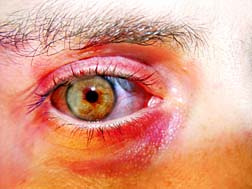
Toxic epidermal necrolysis and Stevens-Johnson Syndrome are both commonly caused by infection or medications. (Note that these terms are sometimes used interchangeably. See below for further information.) The most common symptoms of both conditions include dry, itchy skin, fever, abdominal pain, a red rash, blisters on the skin and lesions in the mucosal tissues.
While both conditions typically begin with red, itchy skin, there are some differences between toxic epidermal and Stevens-Johnson Syndrome. Toxicity is usually caused by an infection, while this condition is not caused by bacteria.
As previously stated, toxicity causes inflammation in the body and is most commonly found in the skin disorder. Symptoms can include a burning sensation when touching or rubbing the affected area. Sometimes there are no visible signs of toxicity.
On the other hand, the skin disease Stevens-Johnson Syndrome is caused by chemicals and drugs. This condition is very similar to toxicity, although it does not cause any major inflammation. The symptoms of Stevens-Johnson Syndrome include a whitehead or blister that contains a reddish or purplish film. A thickened scab forms at the blister base. Other signs include excessive sweating, fever and general malaise.
When it comes to the treatment for toxic epidermis or Stevens-Johnson Syndrome, there are some common ways in which this skin condition can be treated. These methods include natural treatments, such as creams, lotions and ointments that contain vitamin E. In some cases the condition may also respond well to a cream with tea tree oil. Surgery may be needed when the condition is extremely severe. For milder cases, corticosteroids are often used for relief.
The most common treatment for toxin-induced skin conditions is to use products that contain vitamin E. Products such as tea tree oil or vitamin E capsules work great because they help moisturize and soothe the skin. Some doctors even recommend applying lemon juice directly to the affected areas.

Some people choose to use a home remedy, such as lemon juice, applied to irritated and sensitive skin areas
If the problem is found to be caused by a medication or medication, your doctor may recommend an over-the-counter antihistamine such as Zantac or Claritin. If the problem is caused by bacteria, antifungal drugs such as Benomyl are prescribed, as well as topical antibiotics.
Since toxins and chemicals can cause toxic epidermis and Stevens-Johnson syndrome, treatment should not be applied in isolation. Therefore, if symptoms continue or blisters are due to a skin condition, it is best to see a dermatologist as soon as possible.
With this skin condition, no treatment will work for everyone. Therefore, it is recommended to seek the help of a dermatologist, especially if the condition persists after four to six weeks of treatment.
Another treatment option for toxic epidermal necrolysis and Stevens-Johnson syndrome is to prevent further exposure to these irritants. Skin care products are available that can help reduce the amount of moisture absorbed by the skin. This is especially important for people with dry skin.
There are also natural remedies for this condition that can be used in combination with skin care products that contain vitamin E and tea tree oil. These products are usually applied before washing the affected area.
Finally, if all else fails, there are medications that are available that can be used to treat toxic epidermal necrolysis and Stevens-Johnson Syndrome. These medications can be taken orally, but many people prefer topical creams or ointments that contain tea tree oil to help ease the condition. Because the symptoms of this condition can sometimes come and go, it is important to follow the doctor's instructions.